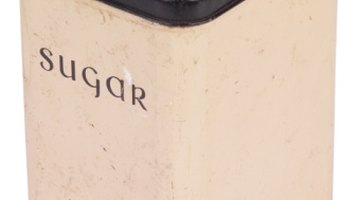How to Trap Horse Flies
Horse flies are one of 30 types of blood letting flies. These large flies are more than just pesky; they carry disease, such as Equine Infectious Anemia. Horse flies lay their eggs near organic matter, such as horse manure. These hardy insects are barely affected by insecticides.

Things You Will Need
- 2 liter soda bottle
- Box cutter knife
- Screwdriver
- Twine
- Bowl
- 1/2 cup white sugar
- 1/2 cup white vinegar
- Spoon
Tip
Change to a fresh trap every two to three days. As flies accumulate in the trap it will begin to stink. Supplement the horse fly bait trap with fly paper to keep flies away from humans and animals.
The best defense against horse flies is to kill them with attractive bait traps. An effective horse fly trap prevents females from laying eggs and biting, ultimately reducing the horse fly population and protecting you and your animals from harmful bites.
-
Remove the cap off a 2-liter soda bottle and throw it away. Cut the plastic bottle approximately four inches below the neck of the bottle. Use box cutters to carefully cut the bottle.
-
Turn the upper portion of the bottle upside down so the mouth of the bottle is pointing down. Insert the upper portion into the lower portion so it forms a sort of funnel into the rest of the bottle.
-
Pierce four holes through the top of the horse fly trap about one inch below the top. Space the holes evenly apart to go around the entire top.
-
Thread a length of about two feet of twine through each hole. Knot the twine near the hole to secure both portions of the bottle together. Bring the four ends together above the center of the bottle and secure them with a knot. This knot also serves as the hanger for your horse fly trap.
-
Pour two cups of water into a bowl. Stir in 1/2 cup of white sugar and 1/2 cup of white vinegar until the sugar is dissolved. Add the vinegar and sugar horse fly bait to the trap. Hang the trap in your barn or other area where horse flies are prevalent.


References
Writer Bio
Mary Ylisela is a former teacher with a Bachelor of Arts in elementary education and mathematics. She has been a writer since 1996, specializing in business, fitness and education. Prior to teaching, Ylisela worked as a certified fitness instructor and a small-business owner.
Photo Credits
- Comstock Images/Comstock/Getty Images
- Comstock Images/Comstock/Getty Images
- Photos.com/Photos.com/Getty Images
- Hemera Technologies/PhotoObjects.net/Getty Images
More Articles



